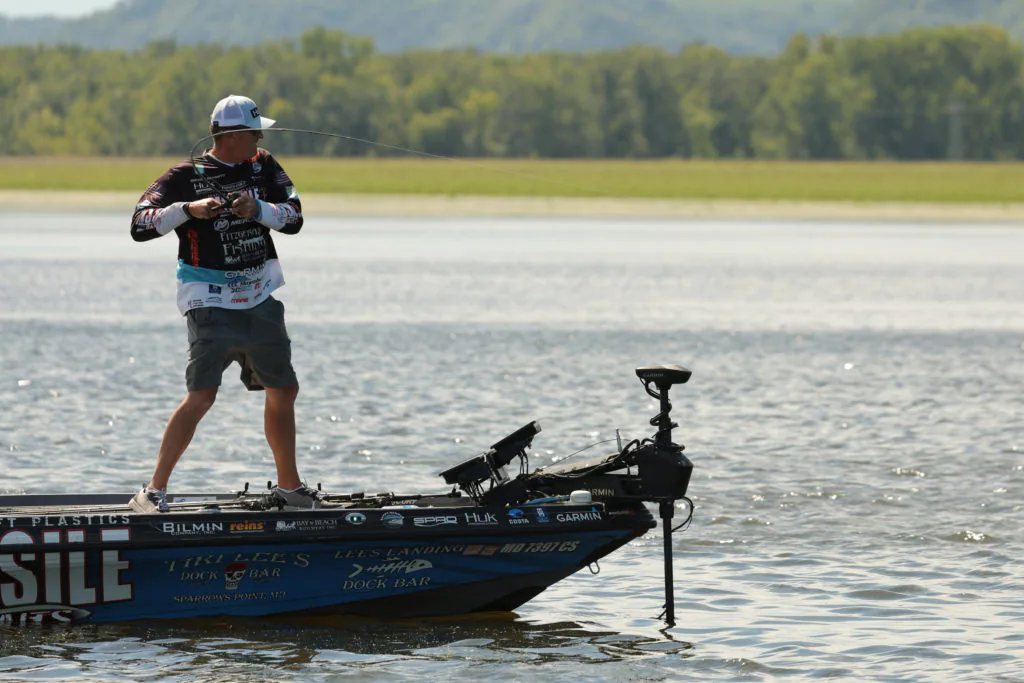“The grass is always greener on the other side of the fence” is an idiomatic phrase that can be dated back to Erasmus in the “Ovid” and has its roots in the fact that regardless of how good things are for us where we live, there is always the thought that things could be better (more green) if we could only get to the other side of the fence, the other side of the hill and so on; etcetera, etcetera.
In the case of an angler it is often said, “The fish are always bigger on the other side of the river,” which is, I suppose, another derivative of the grass is greener line of thought. As an angler that has spent a good deal of his life in search of ‘greener pastures’ or better put, waters that hold larger fish, more fish, or less people, my travels have taken me to many places around the USA and the world as I continue in my pursuit for those elusive waters that would be much better than what I already had nearby at home.
Such was the case last week after I had spent some weeks convincing my brother-in-law to join me on a trip to Montana that would entail finding some less fished and less trampled waters like the Madison, Gallatin, Clark Fork, Blackfoot and others that have been the subject of books, magazine articles and even Hollywood movies. In my mind, I had convinced myself we might find ourselves on trout waters that were “greener pastures” due to less pressure and media exposure as I laid out my plan and justifications for the trip.
We chose to locate in Lewistown, Mont., where there is a large spring creek that has held some mystique to me for quite some time. The name of the creek is Big Spring Creek. It begins south of the town in a large spring that gushes out of the Madison formation near the Snowy Mountains at a volume of 50,000-plus gallons per minute. Its waters are cold, 52-55 degrees Fahrenheit. The creek was originally home for West Slope cutthroat trout prior to Western civilization and the settlement of the West that came in the late 1870s to this part of Montana.
The thought was this: should the other rivers and streams around Lewistown be found to be too low and too warm due to the heat and drought in 2021, or, God forbid, fishless, the two of us could always fall back to Big Spring Creek and explore its length before our time was up. Besides that, Lewistown was also the only town between Great Falls and Billings that had enough population to find food and lodging that wasn’t dubious in nature. We also planned to fish the upper reaches of the Judith River and Little Belt Creek, all within a reasonable drive from our base camp location in central Montana.
Our drive north was initially depressing. The ravages of the heat and drought on the grasslands in the rolling prairies north of the Yellowstone River at Big Timber, Mont., were certainly not greener. The cattle grazing the hillsides and valleys looked miserable as they scavenged for whatever blades of succulent grasses were still available to them. Smoke from the wildfires in western Montana, Idaho, Oregon and northern California turned the sun into a dim red orb that muted the terrain, giving the impression of a Martian landscape, rather than the bright sun and the Cerulean blue sky the state has claimed for its own with Big Sky advertisement and promotion.
Five hours after leaving Cody, we were approaching the town of Lewiston. Surprisingly, we had left the smoke and red sun somewhere around Eddie’s Corner, 15 miles westward. As we dropped down into the Big Spring Creek valley where Lewistown lay, we saw somewhat blue skies, some mountains and a valley filled with greenery everywhere. Things had quickly changed from bleak and grim, to bright and promising for two anglers that had already begun second guessing our original plans and were ready to go to Plan B just 20 minutes earlier.
Big Spring Creek was a surprising find. Before we began to fish, we opted to check out the numerous public fishing locations along the creek to make sure trespassing would not be a problem for us. Fortunately, we bumped into some Montana Fish and Game fishery biologists that had just completed a fish counting survey on the upper reaches of the creek. Their information and insights was a true godsend that saved us time and energy. To all three biologists, if they ever read the Cody Enterprise, we both gratefully say, “Thank you for the time and expert advice given during the quarter hour you took from your schedule to clue in us angling hooligans from Wyoming.”
We spent the rest of the afternoon on Day One fishing until dusk, taking their advice which was, “Use hoppers and droppers for best results, fellas.” Fishing was good. We had been told not to expect huge trout but there would be lots of 8-16 inchers comprised mostly of brown and rainbow trout. The biologists weren’t wrong. The larger trout (13-15 inches) vacuumed hoppers that were cast tight to the creek’s heavily vegetated banks, while the smaller trout seemed more eager to eat size 14 bead-headed nymphs in the deeper riffles and pools.
Day Two was spent wasting four hours driving to the Judith River, probably best known for Robert Redford’s portrayal of Jeremiah Johnson in the movie of the same name. Even though Charles Russell and the fur trapper Johnson spent time on the Judith, we found most of the river’s water diverted to irrigated crops or blocked off from access – even on U.S. Forest Service land where fences crossed the creek, denying any low water access as we drove to the headwaters. Despite the grim water conditions on the south and middle forks of the Judith, we did see the river and have not excluded trying it again after it has time to recover from the drought and flows are much, much higher.
By the time we left the Judith, we didn’t have time to check out other watersheds, so we fell back to Big Spring Creek to finish out the rest of the day on a different stretch of the creek. I failed to mention we fished the creek north of town the first day, so we fished the creek south of town in a section called Brewery Flats where access was unlimited for about a mile and the creek seemed to have a lot of interesting structure. Once again, we had fun landing small to mid-sized rainbows and brown trout until the light of dusk gave way to darkness.
Interestingly to us, we saw no heavy hatches of caddis or mayflies in the evening hours the biologists predicted, nor trout noses sipping bugs, just sporadic micro-caddis and midges. Also interesting, we had to deal with bats the second day. These small flying rodents kept bumping into our fly lines and leaders as we cast blindly upstream in the hopes a rising trout would take our offering. Apparently, a bat’s radar cannot detect monofilament nor PVC fly lines.
It was, “Bat on!” rather than “Fish on!” as the bats intercepted our flies instead of the trout.
Day Three began with heavy smoke again, even in Lewistown. We left the Calvert Hotel (highly recommended) early. We wanted to be on Little Belt Creek well before the sun penetrated the canyon section we had picked to fish. This area was just south of Belt, Mont., and near Sluice Boxes State Park. We were encouraged that the creek had plenty of water and that the water temperatures were still cold enough that we could expect trout to be eager to feed with no loss of energy when fought to hand or the net. After an hour hike from where we parked our vehicle, we were at the mouth of the canyon. My brother-in-law’s first cast with a hopper pattern was taken by a 19-inch rainbow that fought him hard all the way to the net. Some high-five’s occurred once the trout was in the net, then a quick photo before the healthy rainbow was released to the water.
We fished our way up the creek for 2.5 miles and encountered willing West Slope cutthroat and rainbows the entire time. A half dozen cutthroat and rainbows were the same size as the first trout landed. The rest were 7-14 inchers along with one Rocky Mountain whitefish. All were fun with no complaints or disappointment from either of us. Not one brown trout was hooked, broke off or landed. Again, an interesting surprise since the lower end of Belt Creek is noted for harboring some legit 24-inch browns. We did raise one very large fish deep in the canyon but couldn’t tell what species it might be because it just followed our flies, rather than doing us a favor and sampling one long enough to get a hook set. Day Three ended with very tired but happy anglers and on a high note with plans to further explore the canyon for more than one day.
Day Four was spent fishing East Rosebud Creek as we drove back home to Cody. The creek was fun to fish and much like the upper Clarks Fork of the Yellowstone in size and habitat. No trout over 14 inches were caught, nor seen, and the creek temperature of 62 degrees was much warmer than expected. We quit at 2 p.m. even though the hoot owl closure in Montana has been gone now for almost three weeks. We can always come back and fish the East Rosebud much easier than we can get to Lewistown.
Did we find greener pastures, or better fishing by climbing over the rhetorical fence? No, we did not. But we both had a great time on our journey and we did enjoy exploring trout waters far enough from Cody to say it was a trip and that is all that matters in an adventure. Now, the two of us are wondering about the trout fishing found on the east side of Glacier National Park. Our plans are forming to see if the fisheries there are as satisfying as the ones we found base camping in Lewiston, Mont. The green grasses there will be fodder for another column. Stay tuned.
Credit: Source link






























